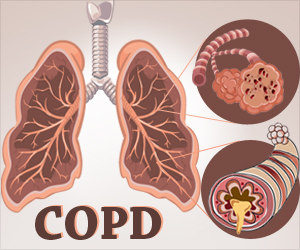- Pulmonary Rehabilitation: Is It For You? - (https://my.clevelandclinic.org/health/articles/8904-pulmonary-rehabilitation-is-it-for-you)
- Pulmonary Rehabilitation. - (https://www.lung.org/lung-health-diseases/lung-procedures-and-tests/pulmonary-rehab)
- Pulmonary Rehabilitation COPD. - (http://www.thaiheart.org/images/column_1389872058/Pulm_rehab.pdf)
- Defining Modern Pulmonary Rehabilitation. An Official American Thoracic Society Workshop Report. - (https://www.atsjournals.org/doi/full/10.1513/annalsats.202102-146st)
What is Pulmonary Rehabilitation?
Pulmonary rehabilitation is a supervised medical education program designed for people with long term (chronic) lung diseases. It is designed to deliver palliative care, improve symptoms of lung disease, enhance activities of daily living and restore a quality living in patients with lung diseases.
Any person with a chronic lung condition may benefit from pulmonary rehabilitation. For example: Patients with Asthma, Chronic obstructive pulmonary disease (COPD), Post – COVID sequelae, Lung cancer and post lung surgery(1✔ ✔Trusted Source
Pulmonary Rehabilitation: Is It For You?
Go to source).
Pulmonary Rehabilitation: The Providers and the Program
A pulmonary rehabilitation team includes doctors, nurses, physiotherapists, respiratory therapists and dietitians. Health professionals create a customized and structured program to meet your specific needs.
Pulmonary rehabilitation is usually an outpatient program and may be based in a hospital or at a clinic. Certain aspects of the pulmonary rehabilitation may be catered to at your own home.
Pulmonary Rehabilitation includes a comprehensive program comprising of -
- Patient Assessment: This includes the physical assessment of the patient by the healthcare provider. It comprises of basic measurements like oxygen level, blood pressure and heart rate followed pulmonary function tests to check the patient's breathing and a walking test to measure how far you can go in six minutes.
- Education: The team gets a clear understanding of the patient's disease condition and provides details that can help the patient deal with his chronic lung condition in a better way. For example: Smoking cessation
- Exercise Training: This aspect of the program encompasses of endurance training, strength training and muscle training. It aims to improve exercise capacity, muscle force and quality of life of the patient.
- Chest Physiotherapy and Breathing exercises: Specific breathing techniques likepursed-lip breathing are very helpful in patients with chronic lung diseases. Posture techniques and Diaphragmatic breathing techniques are a few examples of similar techniques that help patients with chronic lung conditions.

- Psycho-Social Conditioning: Incapacitation in breathing has an overall impact on the mental, physical and social wellbeing of an individual. Cases with chronic respiratory limitations eg: Post COVID sequelae need emotional and psychological support which the program offers.
- Nutrition Advices: Nutrition is a very important component of the rehabilitation program. Weight loss is an independent risk factor for mortality in COPD patients. Hence high protein diet and a balanced approach is vital.
- Follow-Up Visits: In subsequent visits patients are assessed for improvement in their Lung function, exercise capacity, muscle strength and overall health status(2✔ ✔Trusted Source
Pulmonary Rehabilitation.
Go to source).
Risks and Benefits of Pulmonary Rehabilitation
Benefits of Pulmonary Rehabilitation
- Improves respiratory symptoms, exercise capacity and reduces the perceived intensity of breathlessness
- Improves health-related quality of life
- Improves recovery after hospitalization along with the number of hospitalizations and days spent in the hospital
- Benefits extend well beyond the immediate period of training
- Improves survival and enhances the effect of long-acting bronchodilators
Risks of Pulmonary Rehabilitation
There are very few risks involved with pulmonary rehabilitation. Shortness of breath and sore muscles during the initial phases of training may be bothersome, however, the symptoms are carefully monitored during the program. With gradual training in subsequent days, this should improve with regular exercise and training(3✔ ✔Trusted Source
Pulmonary Rehabilitation COPD.
Go to source).
Recent Advances in Pulmonary Rehabilitation
The COVID-19 pandemic was a "wake-up call" for the healthcare systems to implement telehealth solutions which includes tele-rehabilitation and remote monitoring of patients.
In addition to the delivery of rehabilitation services via teleconferencing and smart applications, the 21st century developments incorporate wearables (e.g., for physical activity) and modern monitoring devices.
Novel solutions also offer the opportunity to incorporate modern innovations in education delivery and behavioral change in pulmonary rehabilitation. Currently there's enough evidence to support tele-rehabilitation as a safe and effective alternative to the traditional pulmonary rehabilitation programs.
The future of pulmonary rehabilitation shall include more comprehensive and customized choices for patients. Robust quality-assurance processes are necessary for all programs to ensure that the substantial benefits of pulmonary rehabilitation are consistently delivered and attained by people with chronic lung disease across the world(4✔ ✔Trusted Source
Defining Modern Pulmonary Rehabilitation. An Official American Thoracic Society Workshop Report.
Go to source).









